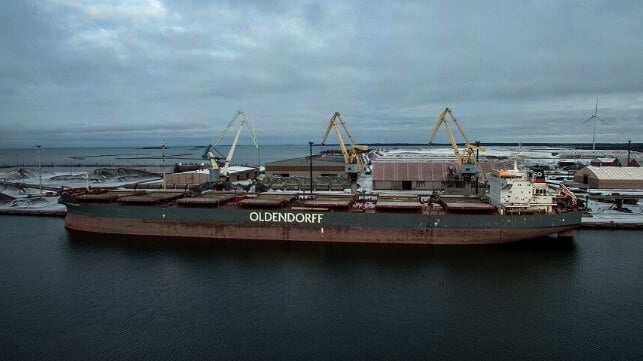Combating Sail Fast/Wait Blue Visby Platform Beats Goal for GCG Reductions

Slow steaming and managing voyage planning to maintain commercial contracts while reducing emissions is seen as one technique immediately available to the shipping industry to reduce harmful carbon emissions. The Blue Visby platform reports it achieved significant reductions on its first prototype voyages on two in-service vessels over the last two months and will continue to move forward with trials.
The multilateral platform was developed over the past few years and has drawn support from more than 32 members from various parts of the industry, including operators including Mitsui O.S.K., Torm, AngloAmerican, and others as well as BIMCO and other trade groups. Lloyds, ClassNK, and Bureau Veritas are also among the participants.
The premise behind the platform is to eradicate the use of an operational approach they call “Sail Fast, Then Wait.” The effort led by Norwegian software company NAPA and London-based law firm Stephenson Harwood says based on an analysis of 2019 figures, the carbon footprint of the maritime industry could be reduced by about 15 percent or overall 45 million tonnes of CO2 across the tanker fleet and bulker fleets just by stopping the practice and allowing ships to reduce speed.
“Decarbonisation is unattainable without energy efficiency, and energy efficiency is impossible if ships continue to Sail Fast Then Wait,” said Haris Zografakis and Pekka Pakkanen, co-ordinators of the Blue Visby Consortium.
While it involves a systematic optimization of the ocean passage, they argue it does not interfere with weather routing, voyage planning, or the timing of berthing, which remains in control of the ship and its operator. The Blue Visby Solution combines software, operations, and contracts, to systematically optimize the ocean passage to reduce CO2 emissions.
Test voyages were undertaken in March and April, with the Gerdt Oldendorff, an 80,800 dwt bulker, and the Begonia, a 61,100 dwt bulker both sailing ballast voyages for CB Group to its Kwinana Grain Terminal in Australia. The Oldendorff vessel achieved a 28.2 percent reduction in CO2 emissions while the Begonia saved 12.9 percent of CO2 emissions for an average of 17.3 percent. They noted that alternative benchmarks were tested involving speed, RPM, and other factors.
They report that these prototype voyages further confirmed earlier efforts. Simulations based on 284 voyages between November 2021 and August 2023 demonstrated a potential CO2 savings of 25.6 percent on an average voyage, A pilot program in 2023 tested ten voyages producing an average potential CO2 savings of 18.9 percent.
“We are very excited to see the results of the first Prototype Trials,” said Christian Wounlund, CEO of Blue Visby. “All components of the Blue Visby Solution were tested: contracts, software, operations, and the benefit sharing mechanism. While both the Virtual Pilot Program and the Prototype Trials will continue in the coming months, we are on track for commercial deployment this year.”
They are working to scale up and the commercial deployment of the solution looking to involve more companies and segment. The solution is being presented as a tool that ship operators can adopt to have an immediate impact on CO2 emissions.
